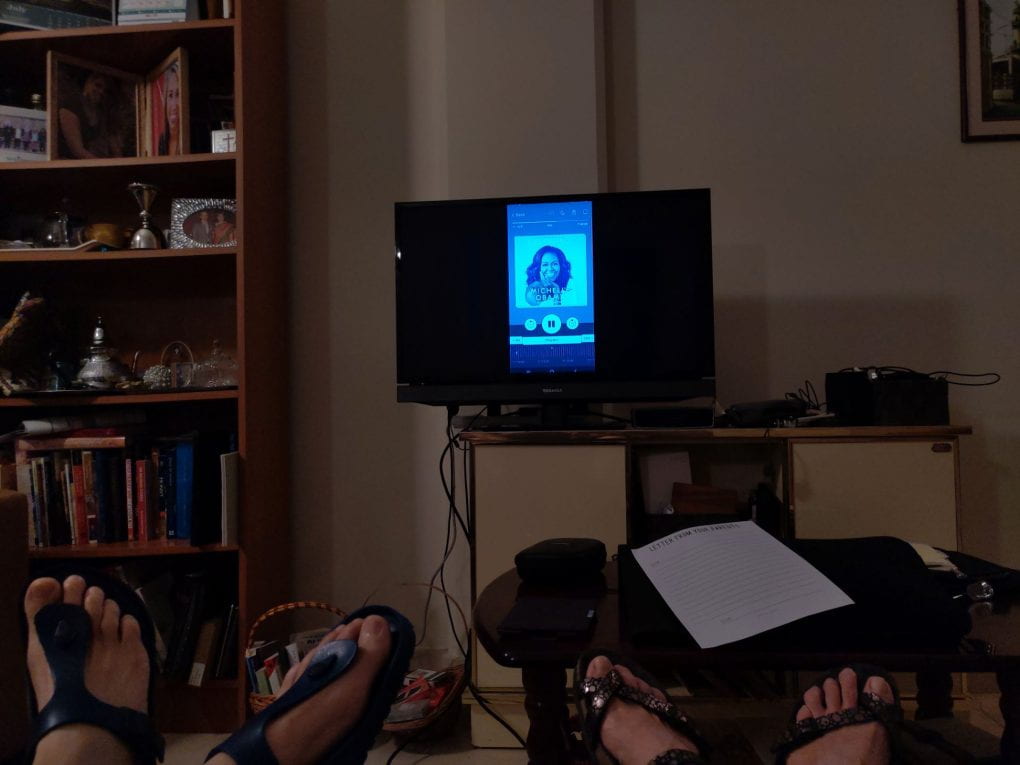
Oh, my dear loveseat,
I see you there with your
Caramel chestnut suit
Of faux suede
Fitting perfectly around
Your well-placed rolls.
Rolls just where I need them–
The lower back bump and
The pillowy paddings at my
Neck and head.
You are a felicitous fit for me.
Thank you, loveseat, for your
Gliding recliner mechanism
That works without a hitch
And allows me a variety
Of positions–upright,
Leaning at a 100-degree angle
And fully reclined, at peace
Like a pearl in a shell.
How many hours have I spent resting
And living here with you?
Thank you, my friend,
For you are not just a recliner.
You are a caring, comforting,
Supporting, and trustworthy friend.
You hold me while I read,
Chat with my family across the sea,
Discuss issues of importance,
Shout at the nightly news,
And cuddle with my husband.
Oh, my dear loveseat, I see you there.
Thank you.
Today is Monday, Day 132 in Bahrain’s coronavirus time, day 97 of The Isolation Journals with Suleika Jaouad. Today’s prompt is by Lisa Ann Cockrel: “Picture the chairs that you sit in on a regular basis—at home, in public, comfortable or uncomfortable. Now pick one of those chairs, and write an ode to it, considering the physical and emotional sensations it evokes.”
